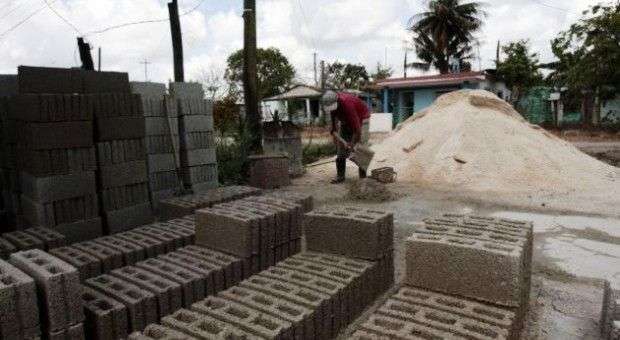In Cuba the construction sector is one of the most interesting, both by the direct impact it has on other economic sectors, as well as being an indicator of development and growth by itself.
As immediate precedent of the current year, you have the picture Construction in Cuba offers. Selected Indicators, published by the National Bureau of Statistics and Information, which provides a sample of the value and volume of construction activities carried out in the period between January and December in the years 2011 and 2012 and, in particular, the performance in 2012.
There are recorded in this report indices finished works, the value of construction by economic activity, number of houses completed by sectors and provinces, domestically produced basic inputs for construction, among other indicators. It also presents graphs illustrating the evolution in each.
Of particular interest is the total number of works completed in 2012, of which 14232 were residential works. (After these, the majority was concentrated in electrical networks, with 5386).
The economic activities where the value of building * are the largest were the actual construction and those of public administration, followed by defense and security, business services and supply of electricity, gas and water. On the other hand, the lower values recorded were mining and quarrying, public health and welfare, education and the sugar industry, in that order.
Housing construction is an especially sensitive issue since it is one of the most serious problems in the country. In 2010, the deficit in this activity amounted to some 600,000 buildings, not to mention that about 8.5 out of every 10 buildings were in need of repair with different levels of intervention. In the report, the structure of houses completed by provinces has Havana with the highest percent at the top, followed by Holguín, Granma and Pinar del Rio. Meanwhile Isla de la Juventud, Guantanamo and Mayabeque, in that order, recorded the lowest percentages.
As to the number of works resulting from own effort compared to the cooperative and state sector as predictably are at a lower level: 28.9% compared with 71, 1%. This situation must be changed with the recent start-up of 12 construction cooperatives, to which Cuba will add another 12 eventually, making a total of 24.
Definition of key indicators
* Value of Building: the sum of the physical execution of construction and assembly indicators for investments and building maintenance both executed by hired third parties and by their own means.
Construction and assembly for investments: the values that correspond to all of the construction and assembly work, physically executed, ie regardless of the receipts and payments for all constructive forces involved. Includes: all the work done on creating a new building, road, water and sea works, installation of networks for transmission and distribution of electric power, communications, etc., And the set of operations to locate, fix and couple machinery equipment and technology, energy, freight, transport, etc.., also including all facilities and necessary accessories of their operations and capital repairs and building maintenance. It excludes: machinery and equipment remaining in the work as part of the tangible asset on its completion, the studies of architecture and engineering projects as required; inspections and intangible fixed assets that stay.
Maintenance construction: group of works which aims to prevent or correct the constructive damages to isolated elements or parts of a work, by the limited participation of construction specialties, without this changing its functions, shape or original dimension. Their purpose is the systematic and preventive care of a work and as such they do not alter the initial value of the medium on which it is made. They usually run in a period not exceeding one year.
Housing: those buildings which own disposition and characteristics allow them to be used as individual or family lodgment, including residential buildings that have local shops, restaurants, hostels for workers, etc..
Completed dwellings: dwellings that are at the end of all construction works, according to the technical documentation prepared for the purpose, that is, those that have reached one hundred percent of its physical implementation with respect to its value.
Work under construction: any building or other construction that makes up an investment, to which a discrete function and precise physical limits are recognize and, based on these, has its own budget and documents. Work under construction take into account or consider the part of civil construction, including in that term the technology independent facility that belongs to each building, such as lighting, utility outlets, plumbing and others. In the case of lines includes pipes and similar, by extension of the above concept, a section, or equivalent circuit capable of operating independently.
Work under construction done: Work under construction when all the jobs defined on budget and project have been completed, ie, that the object of work put into operation its total capacity. For the record and must be completed Certification document accepted by the investor and builder.











Estoy interesado en sector de la construcción en Cuba y tengo una pequeña empresa de construcción en España y quisiera saver que se nesecita para introducir una empresa en Cuba ,quisiera saver los requisitos para poder montar una empresa de construcción en Cuba .